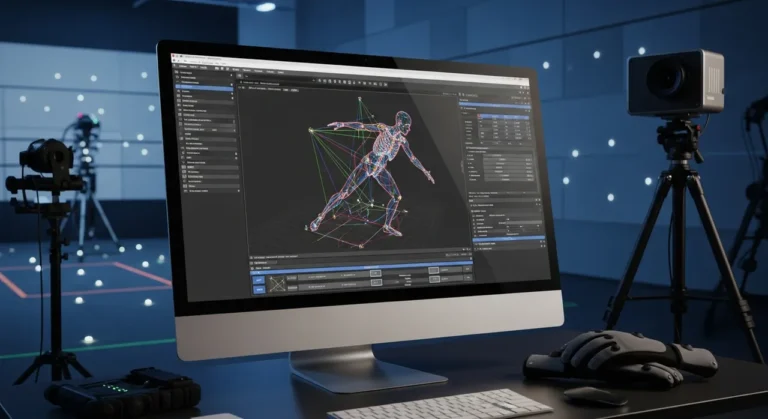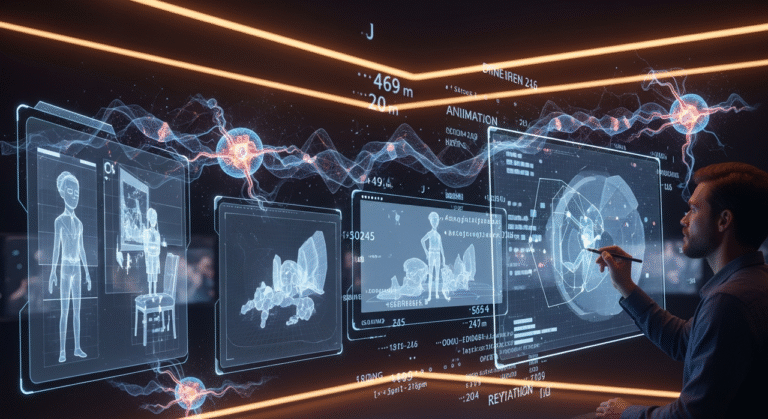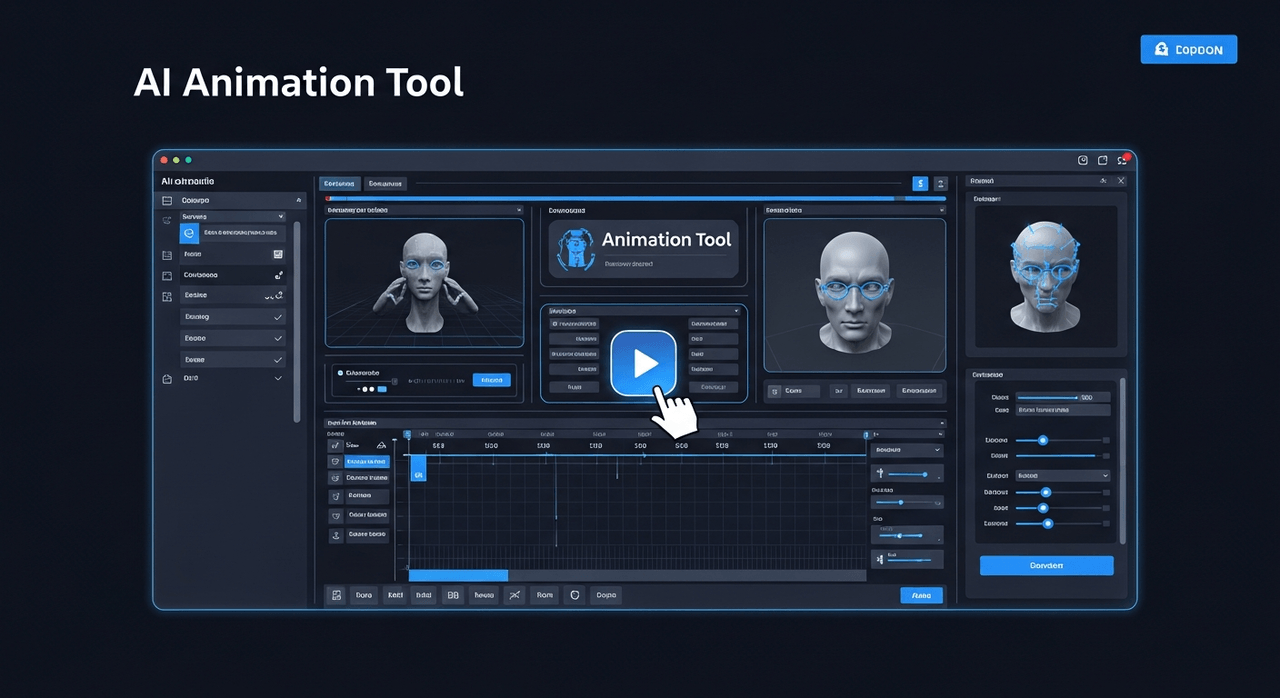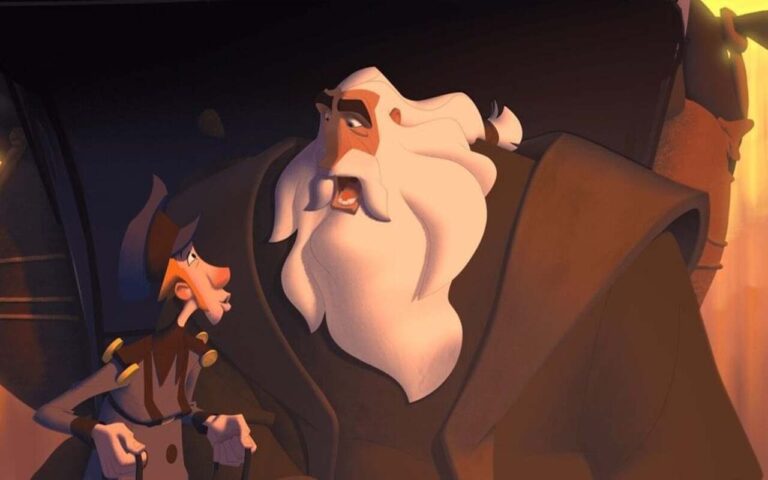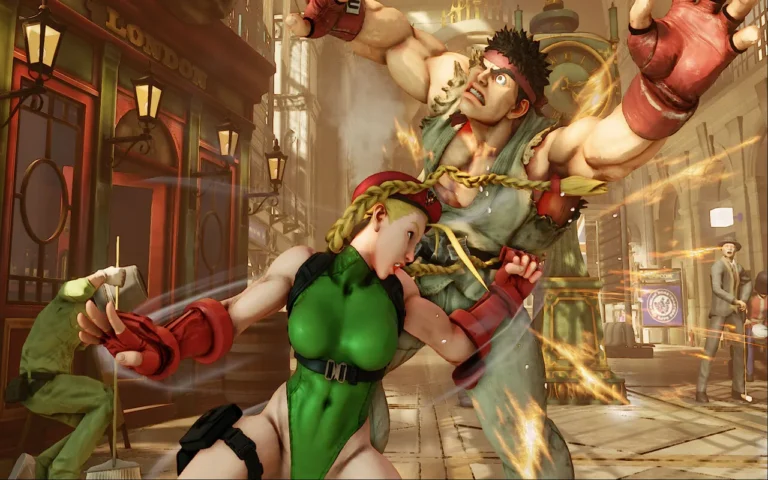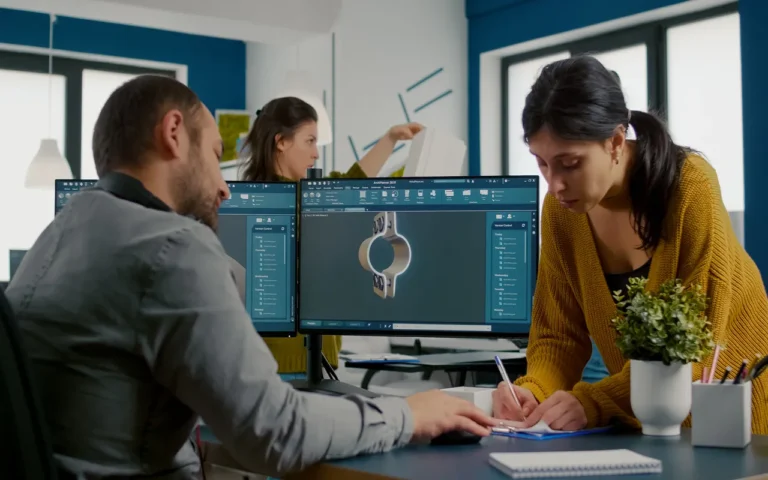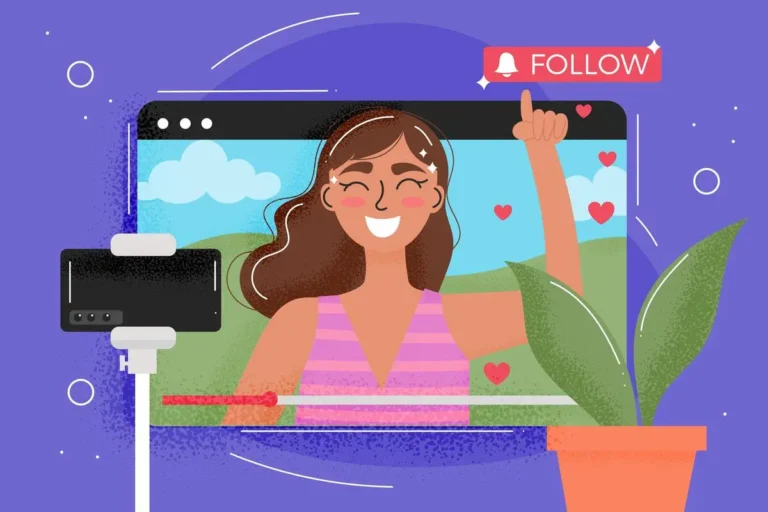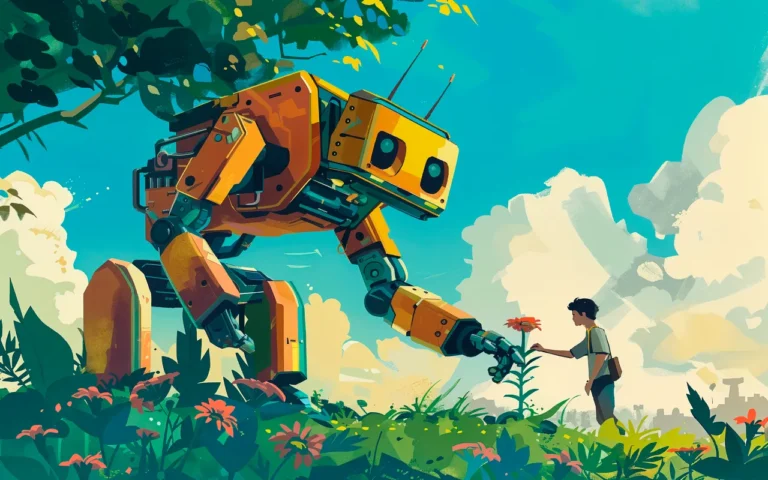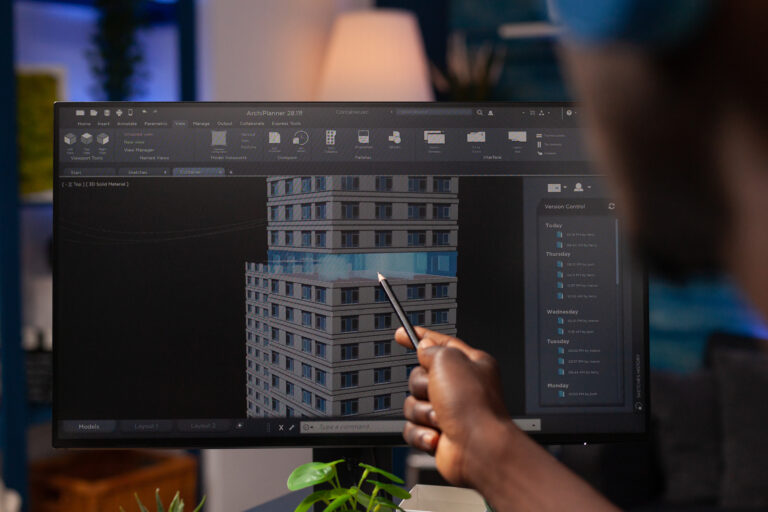Today, animation is not just for entertainment, but it’s also a powerful tool for marketers. Are you launching a product, depicting a service, or building brand awareness? With the proper style of commercial animation, your message can be more engaging and memorable.
But with all these styles available to you, how do you choose the most appropriate one for your brand?
Let’s dive into the nine most trending commercial animation styles, their advantages, disadvantages, and how to select the best one for your marketing needs.
- 2D Animation
- 3D Animation
- Motion Graphics
- Whiteboard Animation
- Stop Motion
- Cutout Animation
- Character Animation
- Explainer Videos
- Product Demos

Need Animation Services?
Visit our Animation Service page to see how we can help bring your ideas to life!
What Are the Types of Commercial Animations?
Commercial animation is animation content produced to enrich businesses, such as crypto branding and marketing goals. To launch a new product, describe a complicated concept, or just establish brand visibility, commercial animation services provide a rich, dynamic, and extremely shareable means of communication. The reason famous brands use animated ads is that it’s not only for fun—commercial animation is a form of design-centered, movement-based, emotive storytelling aimed at achieving clear goals.
Let’s break down the nine essential types of commercial animation, along with their unique strengths, best use cases, and what makes them stand out.
1. 2D Animation
2D animation is the OG of commercial animated content—clean, simple, and surprisingly powerful. It involves creating characters, scenes, and actions in a two-dimensional space. You’ve probably seen different types of 2D animation in explainer videos, mobile app ads, or those punchy Instagram reels.
Why it works: Not very costly, simple to produce with 2D animation software, and extremely adaptable on various platforms. Companies apply 2D animation to introduce new products & describe their services. It is also used in short social media videos that captivate users within 60 seconds.
Best for: Startups, mobile apps, small businesses, and low-cost advertising campaigns
Pro tip: Use it with good storytelling and voiceover, and achieve high grades on emotional connection.
Here is a great example of a commercial 2D animation by Duolingo:
2. 3D Animation
If you have to display products or environments in jaw-dropping realism, 3D commercial animation is your destination. It uses depth, texture, and lighting effects to create a captivating visual experience.
3D animation is used typically in upscale marketing—think luxury watches twirling under movie lighting or residential tours of high-rise property developments.
Why it works: It puts your brand in the lead with streamlined graphics that are realistic and high-end.
Best for: Auto brands, real estate, luxury goods, tech startups, and AR/VR experiences
Pro tip: 3D production pipeline is more expensive, but the visual outcome is worth it.
Check out this 3D animation designed by Pixune Studios:
3. Motion Graphics
Commercial motion graphics apply graphic design elements like shapes, text, icons, charts, and animate them. Utilizing commercial animation through motion graphics is a great way of visually presenting information or abstract ideas. The role of motion graphics in crypto branding is very significant and is one of the examples of how this type of commercial animation can upgrade a business.
Why it works: Earnest, neat, professional with a dash of participation. Great for streamlining complex data without dumbing it down.
Best for: Corporate presentations, SaaS tools, fintech, B2B marketing, and explainer videos
Pro tip: Add kinetic text, smooth transitions, and a compelling voiceover to get even the most boring subject to shine.
This motion graphics by Burger King is a perfect example of this type of commercial animation:
4. Whiteboard Animation
This type of commercial animation mimics the process of someone scribbling down on a whiteboard, usually in sync with a voiceover narration. It’s like watching it come together right before your eyes, so it’s quite good for “how-to” tutorials or instructional content.
Why it works: The visual analogy of “doodling the idea” triggers recall and understanding.
Best for: eLearning, corporate training, health education, new hire video greetings
Pro tip: It is quite educational rather than emotional, thus should not be used for hyperdynamic brand commercials.
Watch this ad made by the use of whiteboard animation:
5. Stop Motion
Stop motion is taking real objects in the real world and photographing them frame by frame. The creators slightly move the object between frames and create movement. The outcome is an engaging commercial animation that looks handmade and charmingly quirky.
Why it works: It’s immediately immersive. People are drawn to its DIY, homemade feel.
Best for: Product teasers, packaging launches, craft companies, kids’ content
Pro tip: It’s time-consuming and ideal for short-form videos with a clear visual concept.
This stop motion for Pringles is fun to watch and engaging:
6. Cutout Animation
Think of retro paper dolls or magazine collages. Stacked flat cutout photographs are the secret to generating the illusion of motion. A fun, unconventional look that’s unique for its simplicity and retro coolness.
Why it works: It’s not expensive to create but is high on personality, and that’s why it’s a perfect type of commercial animation. A brand favorite for communicating creativity without the hefty price tag.
Best for: Indie brands, NGOs, story projects, niche markets
Pro tip: Combine cutout with stop motion for a hybrid look that really pops.
An example of cutout animation as a type of commercial animation:
7. Mascot Character Animation
Crafting a killer brand mascot brings personality and emotion to your brand’s story in the form of animated characters—humans, animals, mascots, or even anthropomorphic beings! It’s perfect for establishing emotional connections and brand recognition.
Why it works: People connect with people. Characters allow your audience to identify, laugh, or root for your brand.
Best for: Brand storytelling, family products, educational content, animated shows
Pro tip: Use character animation on your home page or in retargeting ads to push engagement metrics.
Watch this mascot character animation created by Pixune Studios:
8. Explainer Videos
Explainer videos are great for commercial animations due to their efficiency! They appropriate and blend other styles—like motion graphics, character animation, 2D and 3D explainer videos—to deliver a concise overview of your service or product. They’re usually 60–90 seconds in length, and they’re intended to give the response to “What is this and why should I care?”
Why it works: Explainers simplify, dissect, and translate. The cost of animated explainer videos is perfect for startups launching new tech or services.
Best for: Product demos, product tours, and feature demos
Pro tip: A/B test your explainer thumbnails and intros for better CTRs.
This 3D explainer video, designed by Pixune Studio, is a great example of an efficient type of commercial animation:
9. Product Demos
Product demos can take the form of an animated commercial. They visually guide users through a product’s functionality, usually emphasizing features, usability, or major benefits. They may be live action + animation mashups or fully animated, depending on complexity.
Why it works: Buyers don’t read specs. Buyers see the product in action. It gains trust and aligns the decision-making process.
Best for: SaaS offerings, gizmos, devices, medical devices, and ecommerce purchases
Pro tip: Use product demos as part of your onboarding process to achieve engagement.
This brand uses product demos to demonstrate the robustness of their energy drink:
How to Choose the Right Type Of Commercial Animation for Your Brand
Choosing the perfect style of commercial animation depends on a series of factors:
1. Know Your Objective
Identify what you want to accomplish—brand recall, product description, or customer engagement.
2. Understand Your Target Audience
Select the suitable style of commercial animation based on the preferences of your target audience.
3. Set Your Budget
Consider the costs of commercial animation and choose one of the several kinds that is appropriate for your financial condition.
4. Consider Your Brand Personality
Ensure that the chosen type of commercial animation among all various types of animation aligns with your brand personality and values.
Why Animated Commercials Work (And Keep Working)
Commercial Animations work because they:
- Engage: Grab attention immediately and keep people engaged.
- Make Complex Information Easy: Cut through complex ideas into easy-to-understand visuals.
- Develop Recall for Brands: Develop recallable material that stays in the audience’s minds.
- Develop Conversion Rates: Push the viewer to action.
Discover more on why animation is a great concept for social media marketing in our piece on Animation for Social Media.
Case Studies: Coca-Cola’s Successful Use Of Commercial Animation
Coca-Cola has a history of taking simple commercials and turning them into magic, and commercial animation has played a significant role in this process. Remember the “Happiness Factory” released in 2006?
It was like entering a world of fantasy—and that was exactly what the creators had in mind. It wasn’t just about the drink, but about the idea that something festive was happening whenever you opened a Coke. It was wonderfully creative, and people loved it.
Cut to 2024, and Coca-Cola did something a bit different with “Holiday Magic is Coming”. This time, they mixed animation with AI, inviting people all around the world to create their own holiday Coke-themed greeting cards on the web.
It blended the cozy nostalgia of Coca-Cola’s classic holiday imagery (yes, Santa and the red trucks did appear) with the newness of digital innovation. Not everyone was happy with the AI spin—some wondered if it lost that homemade look—but it definitely generated buzz and participation.
Both campaigns demonstrate how Coca-Cola continues to find new means of telling stories without losing the warmth people expect from the brand.
Read More: 11 Animated Ads That Changed the Way We See Advertising
Conclusion: What Kind of Commercial Animation Will You Pick?
As you are now aware of all the different types of commercial animation, all their pros and cons, and how each of them was used successfully in practice, you’re even better placed to choose the appropriate kind of commercial animation for your company.
To summarize the key points discussed in this article:
- 2D animation pipeline is economical and best suited for tutorials and explanatory videos.
- 3D animation brings realism and depth to high-end services and products.
- Motion graphics simplify corporate communications and information-dense content.
- Whiteboard animation is ideal for tutorial or educational content.
- Stop motion is quirky, innovative, and best deployed on YouTube-like platforms.
- Cutout animation provides a homemade, hand-drawn feel for distinctive brand storytelling.
- Character animation builds emotional bonds with your audience.
- Explainer videos bring distinct styles together into one communications vehicle.
- Product demos activate functionality and lead to conversion.
So, what business animation will you be utilizing? Each one is functional in a special way, so it’s just a matter of intent, audience, and brand voice.

